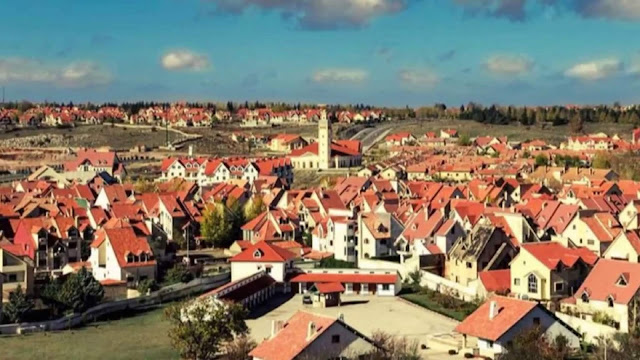THE BLUE PEARL OF MOROCCO
Chefchaouen. in Arabic: شفشاون, also known as Chaouen, is a city in northwest Morocco, it's the chief town of the the province of the same name and is noted for its buildings in shades of blue, Chefchaouen is situated just inland from Tangier and Tetouan. The city was founded in 1471 as a small fortress known as kasbah by Moulay Ali Ibn Rashid Al-Alami and Idris I and through them of the Islamic prophet Muhammed, Al-Alami founded the city to fight the Portuguese invasions of northern Morocco. Along with the Ghomara tribes of the region, many Moriscos and Jews settled here after the Spanish Reconquista in medieval times. In 1920 the Spanish seized Chaouen to form part of Spanish Morocco, Spanish troops imprisoned Abdel-Karim El-Khattabi in the kasbah from 1916 to 1917, after he talked with the German consul Dr Walter Zechlin. In September 1925, in the middle of the Rif War, a rogue squadron of American volunteer pilots, including veterans of World War I, bombarded civilians in Chaouen. Colonel Charles Michael Sweeney had proposed the idea to French Prime Minister Paul Painlevé, who warmly welcomed the colonel's request, after Al-Khattabi was defeated with the help of the french, he was deported to Réunion in 1926, Spain returned the city after the independence of Morocco in 1956. Chefchaouen is a popular tourist destination because of its proximity to Tangier and the Spanish enclave of Ceuta in Arabic: سبتة which is a Spanish autonomous city on the north coast of Africa, bordered by Morocco, it lies along the boundary between the Mediterranean Sea and the Atlantic Ocean and is one of nine populated territories in Africa taken by Spanish, along with Melilla in Arabic: مليلية. There are approximately 200 hotels catering to the summer influx of European tourists, one distinction possessed by Chefchaouen is its blue rinsed houses and buildings.
Chefchaouen is a popular shopping destination as well as it offers many native handicrafts that are not available elsewhere in Morocco, such as wool garments and woven blankets, the goat cheese native to the area is also popular with tourists. The countryside around it had a reputation for being a prolific source of Kief, the Chaouen region is one of the main producers of Cannabis in Morocco, a nearby attraction is the Kef Toghobeit Cave, one of the deepest caves in Africa. Chefchaouen's blue walls are a popular subject on interest, there are several theories as to why the walls were painted blue, one of them is that the blue keeps mosquitoes away, another in that Jews introduced the blue when they took refuge from Hitler in the 1930s, the blue is said to symbolize the sky and heaven and serve as a reminder to lead a spiritual life. However, according to locals, the walls were mandated to be painted blue simply to attract tourists at some point in the 1970s. The growing tourist industry is geared especially towards Spanish tourists, who are numerous during great Catholic feasts like Semana Santa and Christmas. The city's oldest and historically most important mosque is the Great Mosque located at Place Uta Hammam at the heart of the medina which means old town, on a hill overlooking the town to the east there is also a disaffected mosque built by the Spanish in the 1920s, now a popular lookout point, also of great historical and religious impotance to the city is the mausoleum dedicated to the patron saint of northern Morocco's Jebalah region, Moulay Abdessalam Ben Mshish Al-Alami, his tomb and the village surrounding it is roughly 50 kilometers northwest of from Chefchaouen on the old road to Larache. The beauty of Chefchaouen's mountainous surroundings are enhanced by the contrast of the brightly painted medina, it's this beauty and relaxed atmosphere of the town that makes Chefchaouen very attractive to visitors, the main square in the medina is lined with cafes and filled to the brim with locals and tourist mingling easily, another reason why backpackers love this city is the easy availability of drugs. Tourism in Chaouen is driven by its reputation as center of the marijuana plantations region in north Morocco.





Commentaires
Enregistrer un commentaire